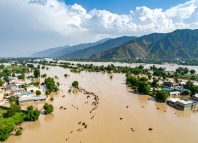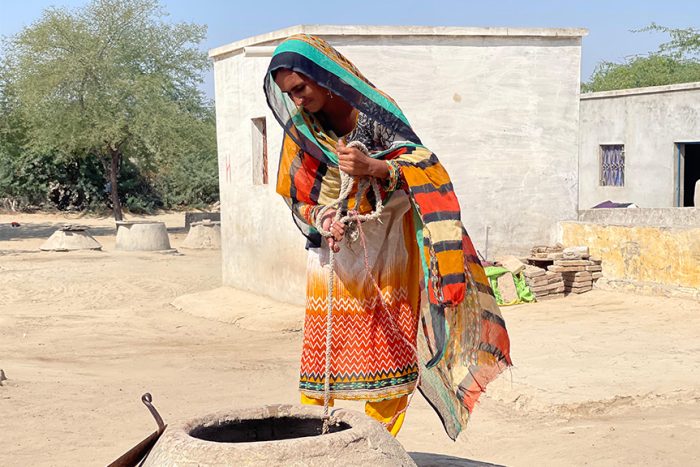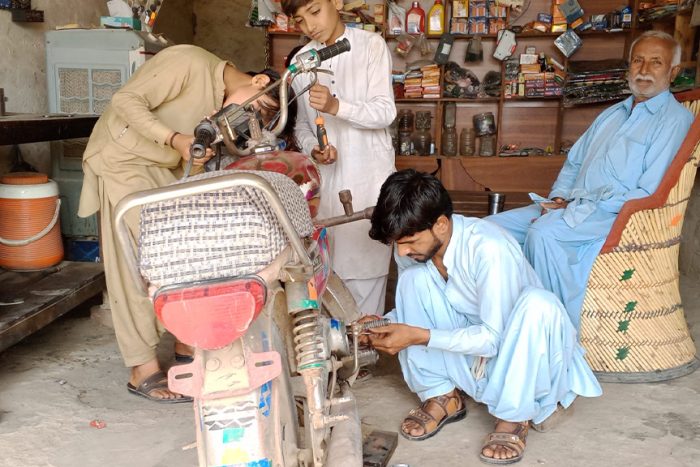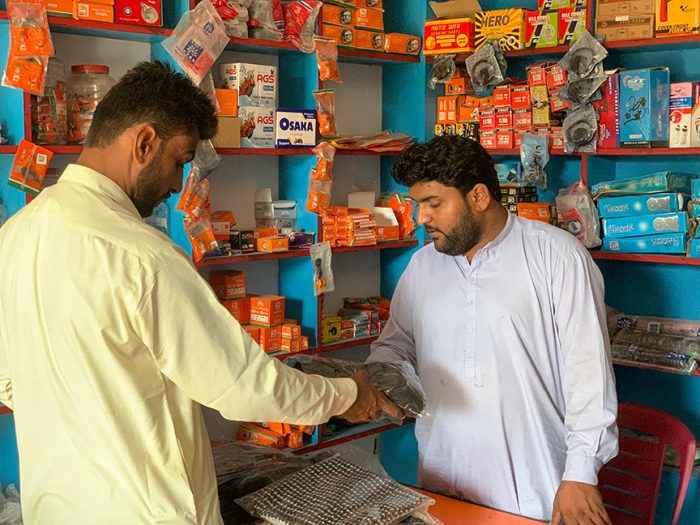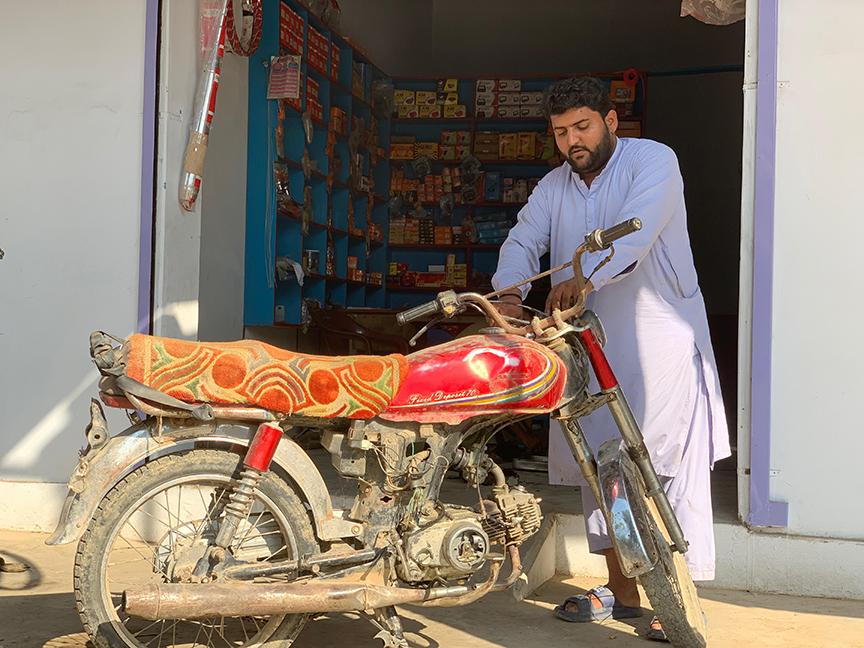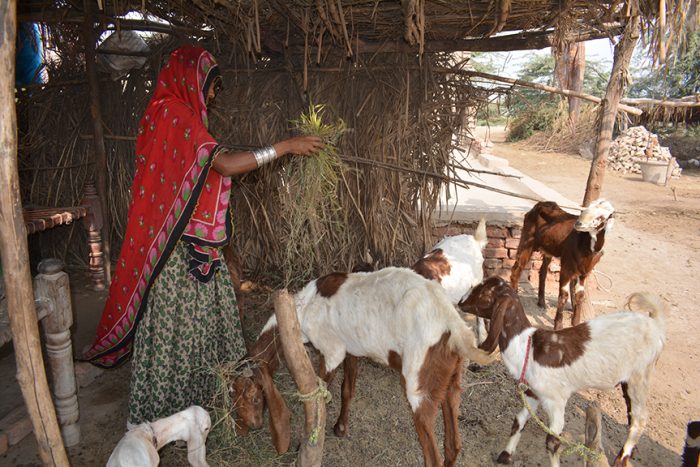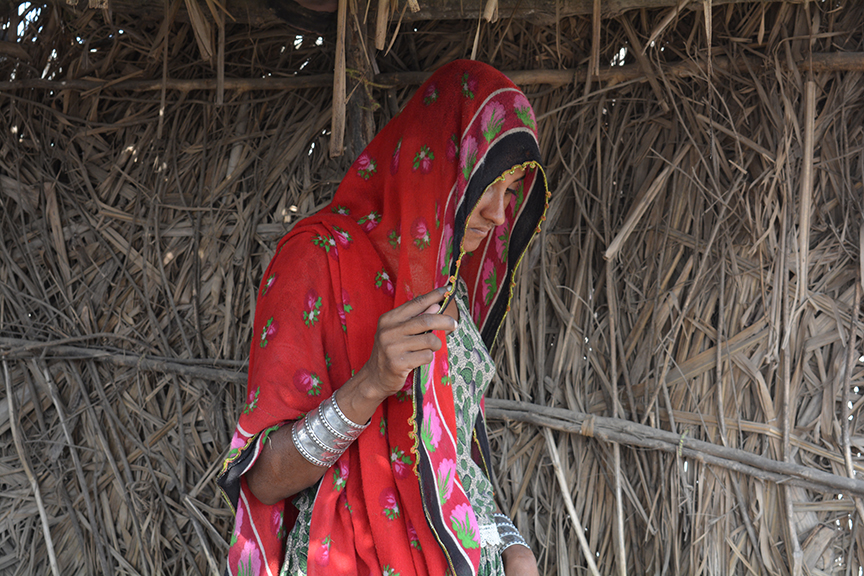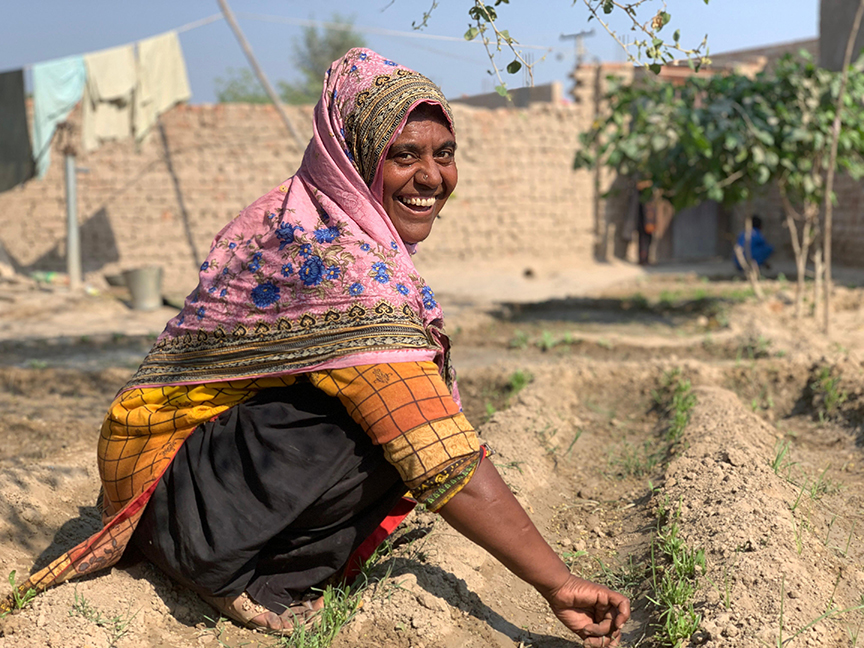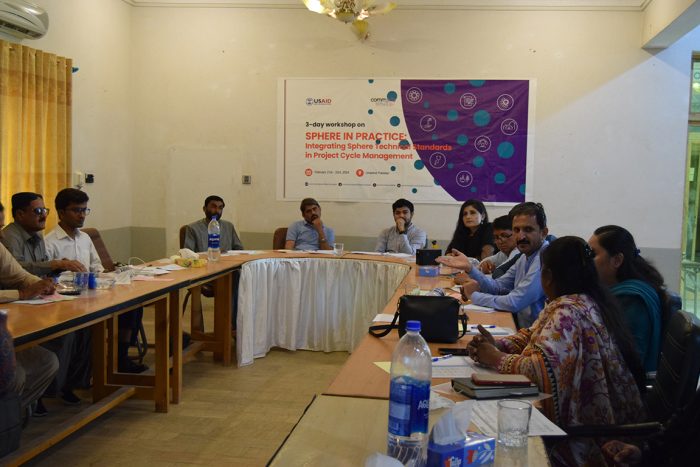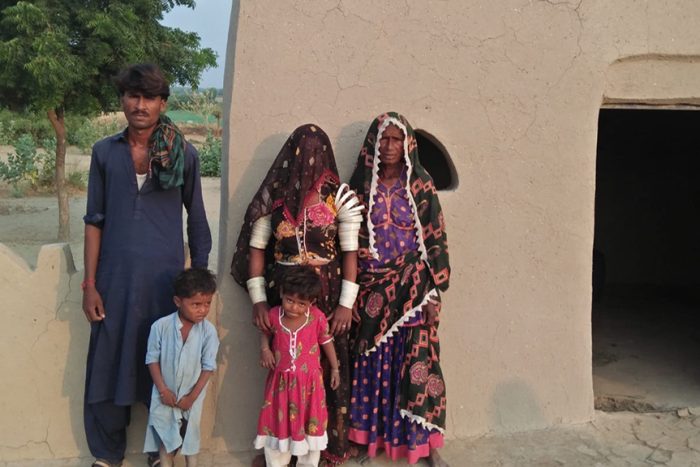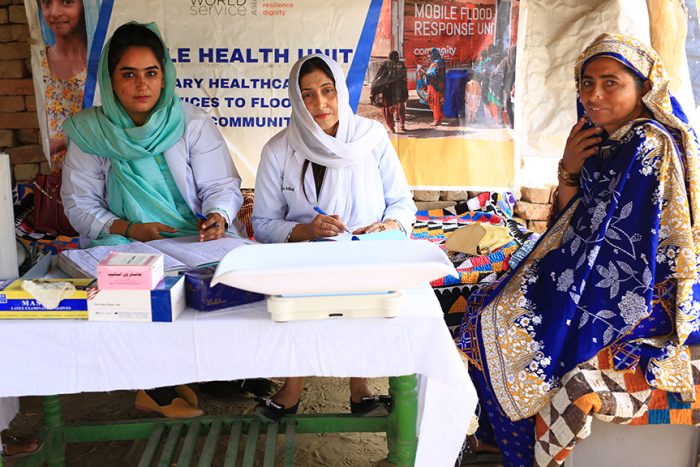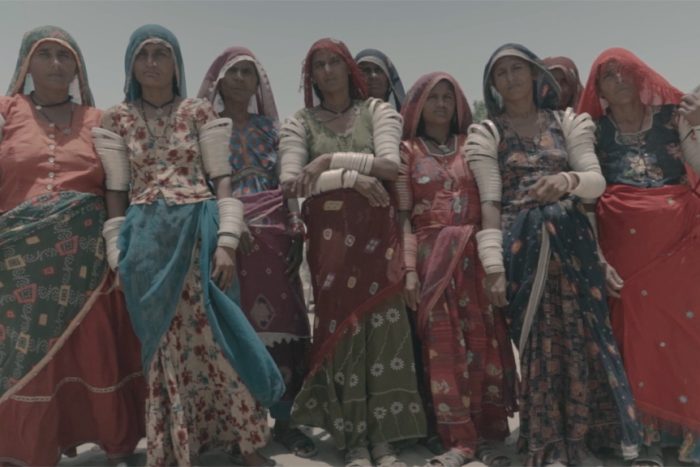Latifan, a 20-year-old woman from Ramo Vehro, UC Faqeer Abdullah in Umerkot, lives with her husband, Yaseen Muhammad, and their three-year-old son, Umer. The household also includes her brother-in-law, his wife, and their three children, making it a family of eight living under one roof. Yaseen works as a daily wage labourer, earning PKR 500 (approximately USD 1.8) per day, though there are occasional opportunities where he earns up to PKR 1000 (approximately USD 7.2) for a day’s work. The family’s monthly expenses amount to around PKR 8,000 (approximately USD 28.7), covering essential grocery items such as wheat, sugar, tea leaves, and rice.
In 2021, a severe drought devastated Latifan’s village, destroying agricultural lands and decimating livestock. The family farmed on four acres of shared land, cultivating cluster beans and millet. However, the drought rendered their crops useless, leaving them in a dire economic state. The family faced a very challenging time but they have persevered and remained resilient.
Community World Service Asia (CWSA), with support from Diakonie Katastrophenhilfe (DKH), initiated a Multi-Purpose Cash Assistance programme in the drought-affected regions of Umerkot. The initiative provided PKR 17,000 ( (approximately USD 61) per household every month for three months—September, October, and November—benefitting 460 households, including Latifan’s family. Their inclusion in the programme was due to their large household size, low income, and farming background. Upon receiving the first tranche of PKR 17,000, Latifan prioritised purchasing wheat for PKR 10,000 (approximately USD 36), with PKR 1,000 (approximately USD 3.6) allocated to land preparation expenses. The remaining PKR 6,000 (approximately USD 22) was spent on groceries such as lentils, rice, and tea leaves, leaving her with PKR 1,000 (approximately USD 3.6) in savings.
Latifan’s aspirations for the remaining instalments include repairing their home and purchasing a mobile phone to facilitate better communication. Her leadership skills are evident through her active participation in the community as a member of the Village Management Committee led by CWSA. As deputy president, she not only takes training sessions from CWSA’s women mobilisers but also shares her knowledge on cultivation and harvesting techniques with other women farmers in the community. Her confidence and proactive nature have made her a key contact for NGOs organising community visits.

The cash assistance programme has significantly improved the family’s living conditions, enabling them to afford three meals a day. Previously, they managed only one or two meals daily. The family’s meals now consist of a good breakfast, potato curry for lunch, and chapati (flatbread) with curry for dinner. They live in a modest two-room house shared between Latifan’s family and her brother-in-law’s household. Their combined livestock of seven goats—four belonging to the brother-in-law and three to Latifan—provides milk for household consumption, with additional milk sold by her brother-in-law, who earns PKR 200 to 300 (approximately USD 1) as a shepherd.
Despite these improvements, Latifan’s family continues to face hardships. The lingering threat of drought hampers agricultural recovery, and Yaseen’s fluctuating income barely meets their needs. A mounting debt of PKR 200,000 (approximately USD 720) weighs heavily on the family, accrued primarily from food purchases and medical expenses, including PKR 40,000 (approximately USD 144) for Latifan’s cesarean operation when her son was born. Health remains a top concern, particularly with her son being susceptible to common childhood illnesses like flu, fever, and cough, which could hinder his healthy growth. Additionally, her nephew’s sleep disturbances pose a further health worry. However, through hard work and payments made to the landlord, they have managed to repay PKR 100,000 (approximately USD 360) of the debt.
Latifan’s determination remains unwavering. Her family plans to use the forthcoming assistance to improve their land conditions, resume crop cultivation, and allocate PKR 10,000 (approximately USD 36) towards further debt repayment. With a vision for a more stable future, Latifan continues to lead her household and community with resilience, striving for financial independence and a sustainable livelihood amidst ongoing challenges.

